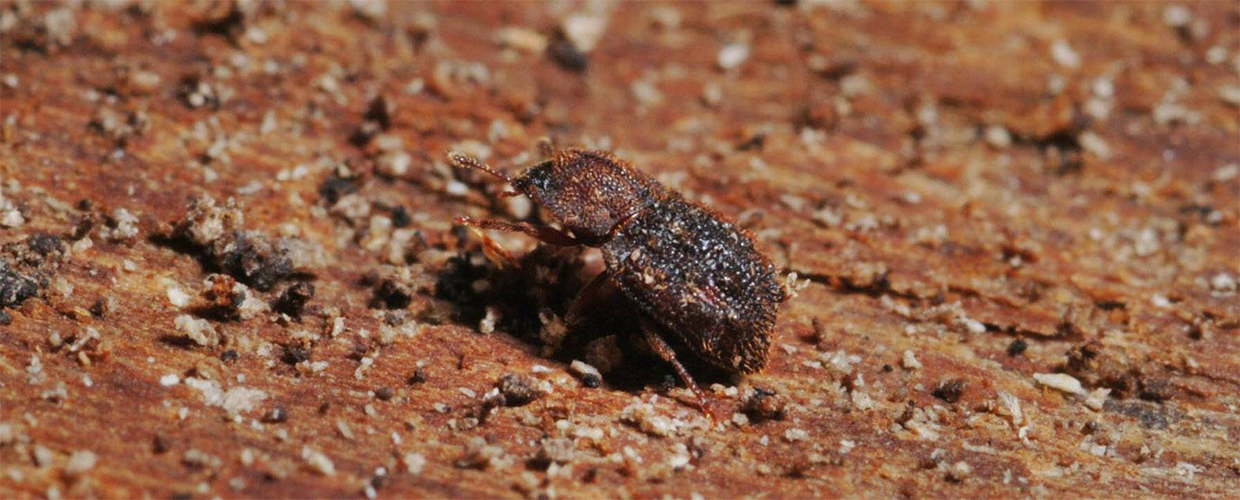About
The Azorean Biodiversity Portal is a unique resource for fundamental research in systematics, biodiversity, education and conservation management in the Azores (Portugal).
It also provides an original platform for biogeographical and macroecological research on islands.
The Azores BioPortal (ABP) is a collaborative e-infrastructure for information and research on Biodiversity, which gathers and manages information and resources on the biodiversity of the Azores. This regional e-Infrastructure is dedicated to the organization, mobilization, curation, and dissemination of biodiversity data, on a platform that is connected to the academia, public administration, and civil society.
The ABP is part of the Portuguese Biodiversity Information and Research e-Infrastructure – PORBIOTA, sharing information with the GBIF Portuguese node, and the European research e-Infrastructure – LifeWatch ERIC.
The ABP compiles together data on around 11,500 species (68% terrestrial; 32% marine), derived from exhaustive literature surveys (the first record dates back to 1844) and from research work in the archipelago from 1967 onwards. The source materials include references published in the form of scientific articles, books and book chapters, and unpublished material, such as degree reports, master’s dissertations and doctoral theses, technical reports and information collected in museum and academic collections.
The taxonomic database of approximately 11,500 species included in the ABP is made available after verification by the team’s researchers and is associated with a spatial presence-absence database, on a 500 m × 500 m grid, which allows view of detailed distribution of a given species in the archipelago. Currently, the spatial database has almost 2 million (1,809,524) records, directly associated with the searched documents and their date of observation/capture. In addition to taxonomic and geographic data, each individual species page also has a large amount of information associated with it, including, whenever possible, photographs, common names, synonyms, colonization, conservation and management status and links to other pages on the taxon. The “Search & Analyse” section allows you to cross-reference information from various metadata sources and, thus, to obtain listings and/or maps of complex and georeferenced information.
The ABP has been of crucial importance in several regional and international projects and is the main support for the assessments of the Red List of Threatened Species of the International Union for the Conservation of Nature (IUCN) of the Azorean endemic species.
In sum, the ABP mobilizes information within the scope of biodiversity, systematics, biogeography and macroecology, shares resources and provides services that help research, decision-making, management, conservation and teaching about the natural heritage of the Azores. The ABP, thus, constitutes an essential resource for researchers, decision-makers, managers, teachers, students, and the general public to improve their knowledge about the biodiversity of the Azores and the effectiveness of management and conservation actions.
Photo © Paulo A.V. Borges (Azorean Biodiversity Group)
BIOGEOGRAPHIC SCOPE
Oceanic islands are of special scientific interest, due to their formation and development mechanisms, means of colonization, development of unique biotas and ecosystems and, more recently, due to the accelerated loss of biodiversity, particularly of endemic species. The Azores are oceanic islands that are home to a unique set of marine and terrestrial species, with about 573 endemic species and subspecies, that is, species that only occur naturally in this area.
MISSION
ABP’s mission is to collect, organize, curate and make available reliable information and open access tools for analysing data on the biodiversity of the Azores.
AIMS
The ABP has the following main goals:
- to promote knowledge and conservation of biodiversity in the Azores, providing up-to-date scientific data on the species known in the region, and how people interact with them, to researchers, decision-makers, managers, educators, and the community in general;
- to promote cutting-edge research in the fields of taxonomy, ecology, biodiversity, biogeography and conservation biology on islands, encouraging the establishment of synergies between researchers from different national and international institutions;
- to advance the application of this knowledge in solving key societal challenges in the field of environmental protection and sustainable development;
- to increase public awareness and understanding of biodiversity, encouraging public involvement and participation in the context of its conservation;
- to increase the open data sharing, thus contributing to the exercise of a more enlightened and active environment citizenship.
OUR USERS
The ABP is a reference resource in the biodiversity field designed to:
Researchers in the fields of ecology, biology, systematics, taxonomy, monitoring and conservation of biodiversity;
Government agencies, natural resource managers and environmental impact appraisers;
Teachers and educators from various scientific areas and levels of education;
The community in general and people involved in environmental education and citizen science activities.
MANAGEMENT/GOVERNANCE
Management
The Board comprises the Director, Deputy Director and representatives of the three research groups involved (Azorean Biodiversity Group, CIBIO-Azores, Okeanos).
The Board is responsible for day-to-day management of the Portal, coordinating data compilation and entering activities, and information sharing, communicating directly with the coordinators of the research teams responsible for each taxonomic group and with the science communication team. In addition to coordinating, creation of content and establishment of institutional partnerships, it is also responsible for developing initiatives necessary for the sustainability of this infrastructure.
Informal advisory panel
The direction of the ABP is supported by a group of consultants, coming from different institutions and similar e-infrastructures, offering support and advice, to guarantee a consistent action with the partners of ABP and with the principles that guide the environmental conservation and science communication in the Autonomous Region of the Azores, in Portugal and in Europe. The position of consultants is requested whenever deemed necessary by the board members.
Team
The ABP involves several work teams from the University of the Azores:
Fauna of terrestrial arthropods and other invertebrates (Annelida, Nematoda), under the coordination of Paulo A.V. Borges (GBA-cE3c).
Fauna of insects of agricultural interest under the coordination of David Horta Lopes and António Onofre Soares (GBA-cE3c).
Terrestrial gastropod fauna (Malacology), coastal marine organisms, under the coordination of António Frias Martins and Ana Cristina Costa (CIBIO-Azores).
Freshwater organisms under the coordination of Vitor Gonçalves and Pedro Raposeiro (CIBIO-Azores);
Seaweed coordinated by Ana Neto (GBA-cE3c).
Bryophytes, fungi and lichens, coordinated by Rosalina Gabriel (GBA-cE3c).
Vascular plants, coordinated by Luís Silva and Mónica Moura (CIBIO-Azores) and Rui Bento Elias (GBA-cE3c).
Fish and other marine vertebrates under the coordination of João Pedro Barreiros and José Azevedo (GBA-cE3c).
Science communication, coordinated by Ana Moura Arroz and Isabel Amorim (GBA-cE3c).
PARTNERSHIPS AND COLLABORATIONS
The ABP shares data and collaborates with several national and international biodiversity portals, platforms and e-infrastructures, namely: GBIF, Naturdata, PORBIOTA, LifeWatch ERIC, Le Monde des insectes, Galerie du Monde des Insectes, UKmoths, Catalogue of the Lepidoptera of Belgium, National Museums Northern Ireland, Moths and Butterflies of Europe and North Africa and BioDiversity4All.
The large number of images of species made available in the ABP, 19,045 images of 11,487 species from the Azores, is only possible thanks to the contribution of several people, including specialists in biodiversity, to whom we express our deepest gratitude (see authorship in photos).

Photo Tarphius relictus © Paulo A.V. Borges (Azorean Biodiversity Group)
FUNDING
The ABP was developed within the scope of the INTERREG III B Projects “Atlântico” (2003-2005) and “BIONATURA” (2007-2008) whose partners in the Azores were, respectively, the Direcção Regional do Ambiente e do Mar and the Agência Regional da Energia e Ambiente – ARENA. The project leader was the Consejeria de Medio Ambiente y Ordenacion Territorial of the Government of the Canary Islands, Spain.
Between 2012 and 2014, it was financed by the project “ATLANTIS-MAR – Mapping coastal and marine biodiversity of the Azores” (M2.1.2/I/027/2011 – Regional Directorate for Science and Technology of the Regional Government of the Azores).
The ABP was recently funded by FEDER at 85%, and by regional funds at 15%, via the Azores 2020 Operational Program, through the “PORBIOTA-AZORES BIOPORTAL” project (ACORES-01-0145-FEDER-000072) (2019-2022) and is currently funded for the project “Azores Bioportal – Biodiversity Portal of the Azores” (FRCT M1.1.A/INFRAEST CIENT/001/2022) (2022-2023).
In 2023-2024 it is also funded by the FCT-UIDB/00329/2020-2024 project under the Pluriannual funding to cE3c (Azorean Biodiversity Group).
CIBIO-Azores is financed by FEDER Funds through the Competitiveness Factors Operational Program – COMPETE and by National funds through FCT – Foundation for Science and Technology within the scope of the project (FCT) UIDB/50027/2020 (CIBIO) and ( FCT) UIDP/50027/2020 (CIBIO)
